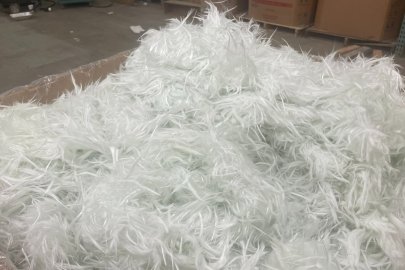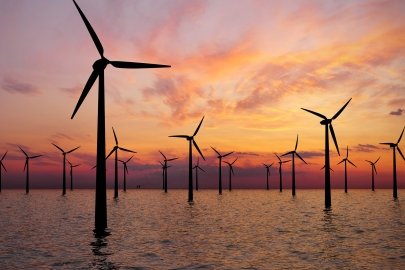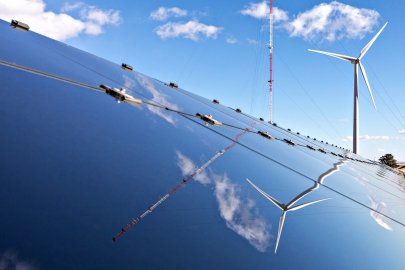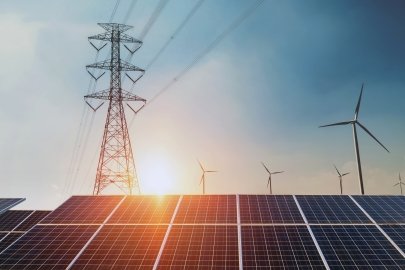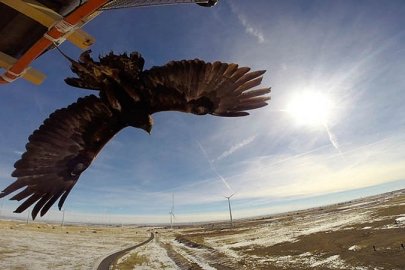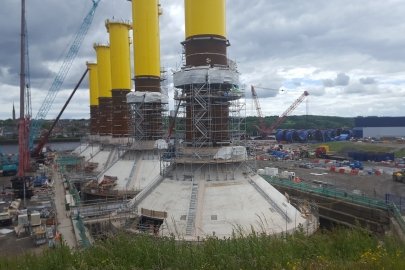It's been a good year for wind energy—and it isn't over yet. The Wind Energy Technologies Office has shared a lot of exciting news in 2022 so far, and even more is set to blow in just beyond the horizon.
Wind Energy Technologies Office
October 17, 2022It's been a good year for wind energy—and it isn't over yet. The U.S. Department of Energy's (DOE) Wind Energy Technologies Office (WETO) has shared a lot of exciting news in 2022 so far, and even more is set to blow in just beyond the horizon.
Last month, WETO announced the FLoating Offshore Wind ReadINess (FLOWIN) Prize—a three-phase, $6.9-million competition designed to pave the way for cost-effective domestic manufacturing and deployment of commercial-scale floating offshore wind energy in U.S. waters. It’s the first prize funded by WETO, which is pretty exciting. But what’s even more exciting is that the prize will help develop a domestic supply chain and accelerate market readiness of U.S. floating offshore wind energy designs, which will drive American leadership in the global industry and help reduce costs. You’ll be hearing more about this prize in months to come.
The FLOWIN Prize is just one of many initiatives DOE recently launched as part of its Floating Offshore Wind Shot™, an interagency effort that aims to reduce the cost of floating offshore wind by at least 70% by 2035. This ambitious goal is just the tip of the iceberg. A deeper look into these initiatives reveals community-revitalizing job creation and numerous economic opportunities, all while promoting an equitable clean energy transition in the United States.
Currently, WETO is supporting important research and development (R&D) in both offshore and land-based wind energy. This issue of the newsletter provides information about wind energy projects from our national laboratories and industry partners. You’ll learn about:
- A new software tool that predicts the most likely long-distance flight paths of individual golden eagles as they ride updrafts. The National Renewable Energy Laboratory's Stochastic Soaring Raptor Simulator could help wind power plant operators restrict wind turbine operations based on local conditions, thus avoiding wildlife-turbine collisions in real time.
- A better way to predict future costs of utility-scale wind and solar energy. It’s a challenge to accurately project the future cost of renewable generation. But through a combination of approaches, researchers at Lawrence Berkeley National Laboratory leveraged their extensive empirical cost and performance data for individual wind and solar plants to do just that.
- A process to recover 99.9%-pure glass fiber from decommissioned fiberglass wind turbine blades. Energy technology company Carbon Rivers has commercialized the process and enabled its use in new composite products, closing the loop on a circular economy for the wind industry.
- An initiative that helps clean energy resources connect to the grid. The Interconnection Innovation e-Xchange enhances overall grid reliability and improves both market competition and transmission access. Program partners are developing solutions for faster, simpler, and fairer interconnections for clean energy resources by using better data, roadmap development, analysis, and technical assistance.
- A Pacific Northwest National Laboratory researcher, Lindsay Sheridan, who spoke with us about the evolving potential of wind energy and how future scientists can get involved with renewable energy.
- The scientific “grand challenges” for evaluating offshore wind resources. A multi-institutional team of wind energy experts outlined and identified gaps in models, data sets, and model validation. Closing these gaps is crucial to furthering offshore wind technology development and deployment.
- A public–private research partnership that is assessing whether concrete is a good choice for supporting offshore wind turbines. The research has produced a dataset with more than 2,500 test results that are being used to advance fundamental models and design standards.
- And more! This newsletter is packed with wind energy R&D information.
Earlier this year, we also got two big wins for wind in the form of the Inflation Reduction Act and the Bipartisan Infrastructure Law. The Inflation Reduction Act invests billions of dollars in wind energy by extending the federal production tax credit for at least 10 years and encouraging investment in American clean energy manufacturing. And the Bipartisan Infrastructure Law seeks to modernize our power grid and facilitate the expansion of clean energy, with many initiatives and programs in the works for wind energy. Both laws will help provide certainty for the wind industry’s future while delivering hefty doses of momentum in getting us there. Stay tuned for upcoming funding announcements.
Finally, DOE recently announced the 30 colleges and universities selected to participate in Phase 1 of the 2023 Collegiate Wind Competition. The Collegiate Wind Competition, which first launched in 2014, helps prepare the future wind energy workforce by inviting college students from a range of disciplines to represent their schools as they design, build, and test a prototype wind turbine; develop a site plan and cost-of-energy analysis for a hypothetical wind farm; and conduct outreach with the wind energy industry, their communities, and local media outlets. These teams will participate during the first half of the 2022–2023 school year. You can read about the 2022 Collegiate Wind Competition winners that were announced in May at the CLEANPOWER 2022 Conference & Exhibition.
Now, it’s time to focus on offshore wind energy. This week’s Offshore WINDPOWER 2022 provides a glimpse into the state of the art (and science) of this burgeoning technology in the United States. If you’re in Providence for the conference, be sure to stop by our exhibit booth #208 and see what the future holds.

Subscribe to the WETO e-newsletter to stay informed on the latest wind energy news, events, publications, and updates.


